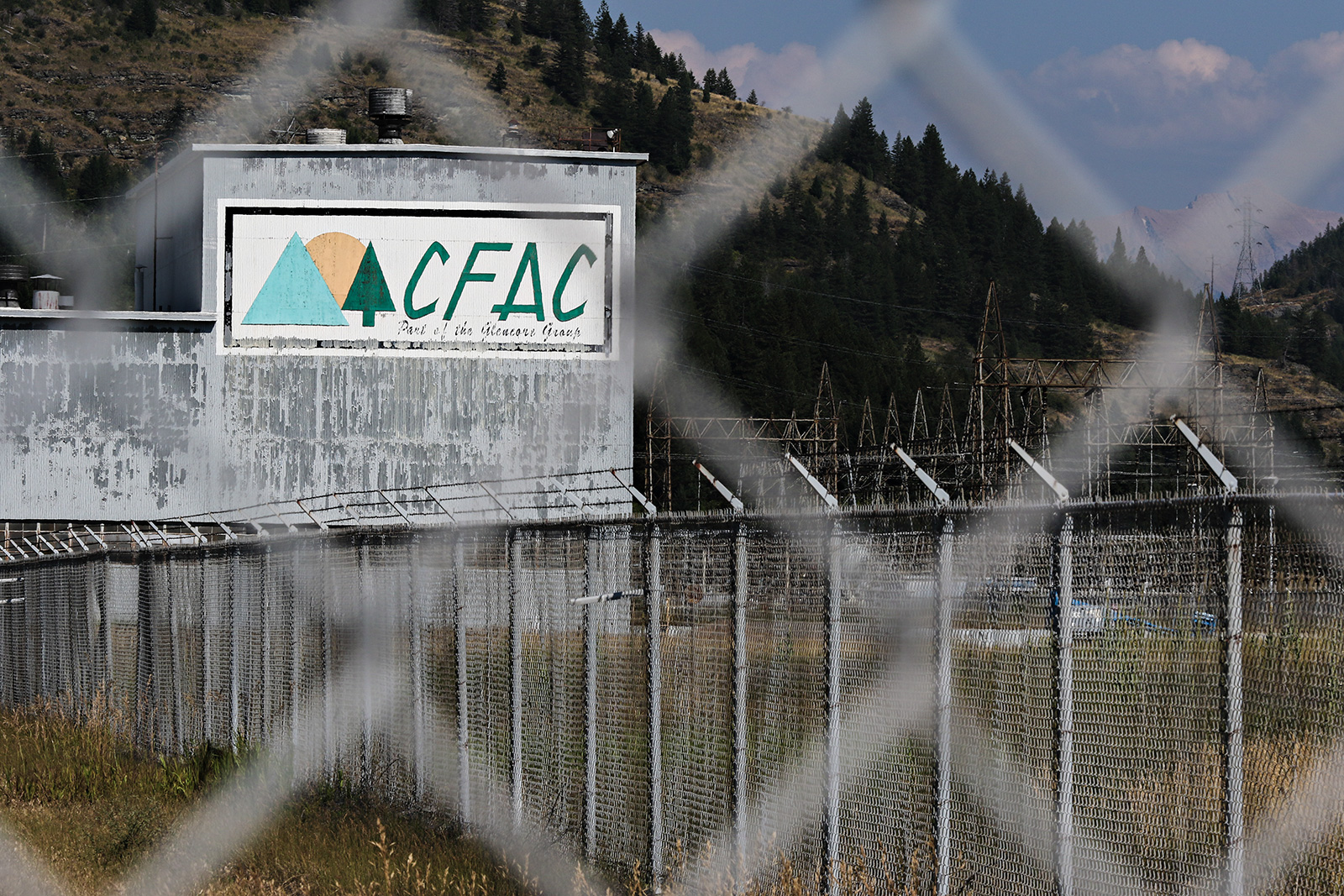Montana Begins Natural Resource Damage Assessment at CFAC Superfund Site
Separate from the shuttered aluminum plant’s federal remediation plan, the Montana Justice Department’s Natural Resource Damage Program allows state, tribal and federal trustees to seek ‘baseline’ restoration and sue corporate polluters for damages
By Tristan Scott
As the U.S. Environmental Protection Agency (EPA) works to finalize remediation of the Columbia Falls Aluminum Company (CFAC) Superfund site, trustees with the Montana Justice Department’s Natural Resource Damage Program recently took the first steps to assess and recover damages from the corporate entities responsible for the toxic contamination at the shuttered aluminum plant along the Flathead River.
In this case, the Montana Natural Resource Damage Program, acting on behalf of Gov. Greg Gianforte, on Jan. 8 joined the Confederated Salish and Kootenai Tribes (CSKT) as well as two federal natural resource trustees, the U.S. Departments of Interior and Agriculture, to issue a notice of intent to perform a natural resource damage assessment at the CFAC site. Along with the notice of intent, the trustees also submitted a detailed 34-page pre-assessment screen.
Under the National Priorities List Comprehensive Environmental Response, Compensation and Liability Act (CERCLA), a pre-assessment screen is the first step in the process to determine whether readily available information suggests that the trustees can make a successful claim and should proceed with a natural resource damage assessment (NRDA) for the site.
“When hazardous substances harm … natural resources or resource services that are held in trust for the public, federal and state laws provide mechanisms that authorize natural resource trustees to seek compensation from potentially responsible parties (PRPs) for those injuries,” according to the pre-assessment screen, which explains that the determination is based on five criteria, including whether a release of a hazardous substance has occurred.
“In summary … the Trustees have determined that an assessment of natural resource damages is warranted,” according to the pre-assessment screen.
The potentially responsible parties in this case include CFAC, Glencore and the Atlantic Richfield Company (ARCO). The companies now have 30 days to provide a response and notify the trustees whether they intend to fund or participate in an assessment of the natural resource damages.
John Stroiazzo, the CFAC project manager on the Superfund site, said CFAC has just been contacted and invited by Montana Natural Resource Damages Program to participate in the development and performance of a Natural Resources Damages Assessment.
“CFAC is now reviewing and studying the request,” Stroiazzo said. “Since the onset of the project in 2013 CFAC has worked proactively and cooperatively with the regulatory agencies meeting all of its requirements, delivering quality work on schedule and has paid all costs.”
The pre-assessment screen relies heavily on a recent federal court case, CFAC v. ARCO, which resulted in a 2021 trial. At the conclusion of the trial, a federal judge in Missoula apportioned liability between CFAC and ARCO — the current and past owners, respectively — of the now-defunct aluminum smelter in Columbia Falls, determining that ARCO is responsible for 35% of past and future cleanup costs with the remaining 65% is allocated to CFAC.
Kathleen Hausrath, lead counsel for the Montana Natural Resource Damage Program, said the settlement process trustees initiated last week doesn’t affect CFAC’s requirements to continue to perform remediation work under Superfund, subject to EPA oversight and with consultation from the Montana Department of Environmental Quality (DEQ).
“This natural resource damage assessment process is separate from EPA’s proposed remediation plan to clean up the CFAC Superfund site,” she said. “The natural resource damages are the residual of the impact from the hazardous substances that will not be addressed by a final cleanup remedy.”
Pursuant to CERCLA and the state equivalent Superfund law, called the Comprehensive Environmental Cleanup and Responsibility Act (CECRA), the trustees have authority to perform a natural resource damage assessment (NRDA) for the CFAC site, she added.
“The trustees have legal authority to recover funds (the ‘damages’) from responsible parties for injuries to natural resources resulting from releases of hazardous substances,” Hausrath wrote in an email. “All natural resource damages recovered by the Trustees must be used to restore the injured resources, ideally to their ‘baseline’ conditions (the conditions they would have been in if the contamination had not occurred). If that is not possible, the damages can be used to replace or acquire the equivalent of the injured resources.”
The Montana Natural Resource Damage Program (NRDP) works on behalf of the governor to recover natural resource damages for the State of Montana. Since its inception in 1990, NRDP has recovered over $275 million in natural resources damages for sites across the state. The notice of intent and pre-assessment screen are available on NRDP’s website: https://dojmt.gov/lands/nrdp-public-notices/notices-of-public-comment/
Located two miles northeast of Columbia Falls on the Flathead River, the CFAC site was once home to an aluminum reduction facility. The primary contaminants of concern are fluoride, cyanide and various metals. EPA’s proposed plan describes the actions the federal government deems necessary to protect human health and the environment from contaminants present in landfills, surface water and groundwater at the site.
From its famous opening in 1955 through the boom years of the 1960s and ’70s, the facility fueled this rural corner of Montana with over 1,500 jobs — almost half the population of Columbia Falls in those days — and millions of dollars in new economic investment. The plant closed in 2009, putting hundreds of employees out of work. The EPA declared it a Superfund site in 2016.
Approximately 40 chemicals have been identified as contaminants of potential concern at the site, including cyanide, fluoride, arsenic, and polycyclic aromatic hydrocarbons (PAHs).
“The trustees reviewed available data in a pre-assessment screen and concluded that soils, groundwater, surface water, sediments, and biological resources have been exposed to and adversely affected by the hazardous substances released from the site,” according to the pre-assessment screen.
Editor’s note: This story has been updated to include comment from CFAC Project Manager John Stroiazzo.